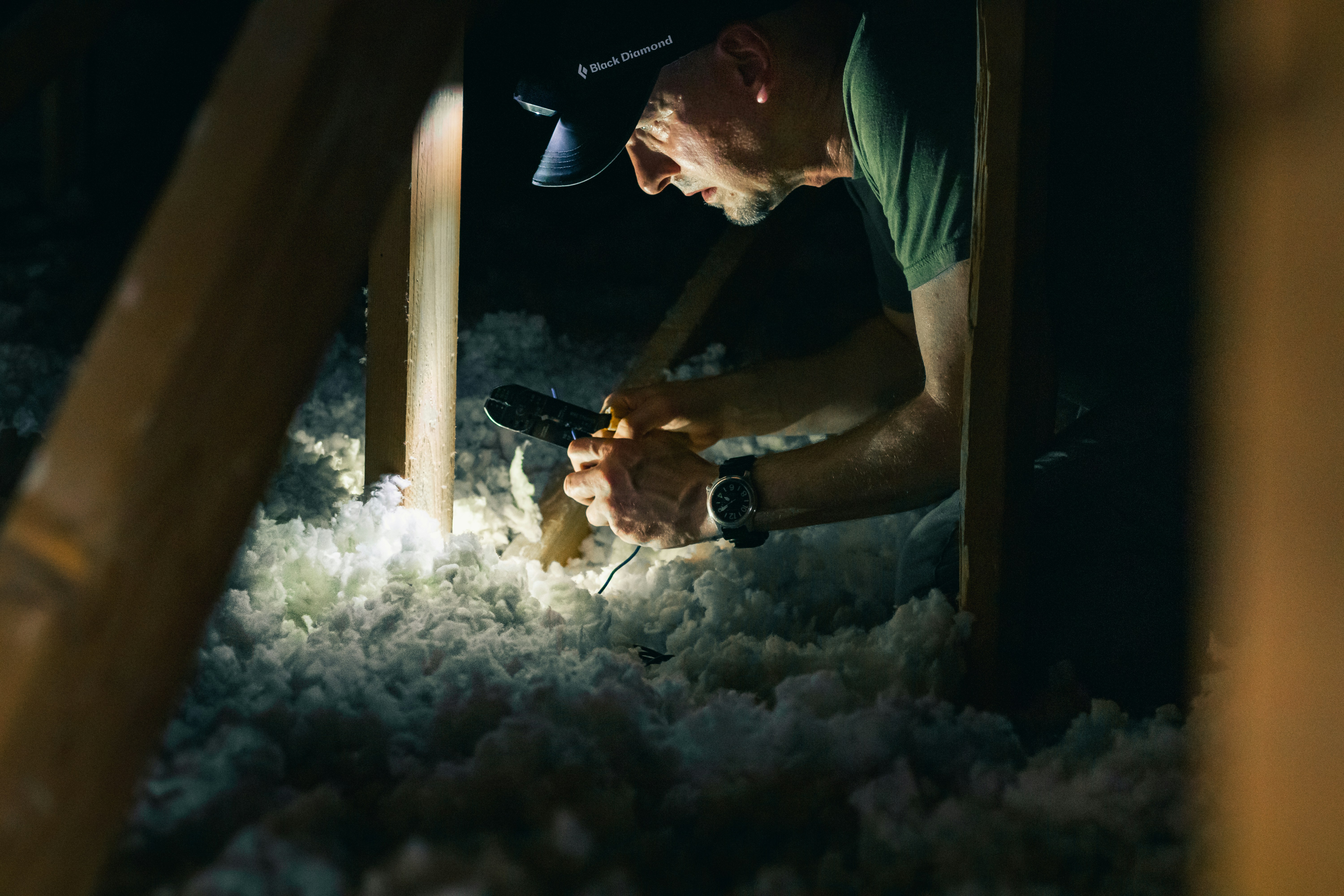Are you in the process of building a shelter and wondering what materials would be best for insulation? Look no further! In this article, we will explore the top natural materials that are ideal for insulation in a shelter. Stay tuned to discover the most effective ways to keep your shelter cozy and energy-efficient.
Overview of Natural Insulation Materials
Natural insulation materials offer a sustainable and eco-friendly alternative to conventional insulation options. These materials, derived from renewable resources, provide effective thermal and acoustic insulation while minimizing the environmental impact. By using natural insulation materials, you can create a comfortable and energy-efficient environment in your shelter. In this article, we will explore the importance of natural insulation materials, their advantages, and how they work.
Importance of Natural Insulation Materials
Natural insulation materials play a crucial role in promoting sustainability and reducing our carbon footprint. Unlike traditional insulation materials such as fiberglass or foam, which are often made from non-renewable resources and have significant environmental consequences, natural insulation materials are biodegradable, non-toxic, and emit fewer greenhouse gases during production. By choosing natural insulation materials, you contribute to a healthier and greener future.
Advantages of using Natural Insulation Materials
There are several advantages to using natural insulation materials in your shelter. First and foremost, these materials have excellent thermal insulation properties, effectively trapping heat in winter and keeping the interior cool during hot summer months. Additionally, natural insulation materials offer superior acoustic insulation, reducing external noise levels and creating a peaceful living environment.
Another significant advantage is that natural insulation materials are breathable, allowing moisture to escape and preventing the buildup of mold and mildew. This can significantly improve indoor air quality and reduce the risk of respiratory issues. Furthermore, natural insulation materials are often sourced locally, supporting regional economies and reducing the environmental impact associated with transportation.
Understanding how Natural Insulation Materials work
Natural insulation materials work by utilizing the inherent properties of the materials themselves. These materials typically have a porous structure, which traps air pockets and slows down the transfer of heat. This insulation mechanism is similar to the way a down-filled jacket keeps you warm by trapping air between the feathers. The air pockets created by the natural insulation materials act as a barrier, preventing heat from escaping or entering the shelter.
Some natural insulation materials, like wool and cotton, also contain natural oils that repel water. This hydrophobic property helps to resist moisture absorption, keeping the insulation material dry and preventing any adverse effects on its performance.
Additionally, natural insulation materials offer thermal mass, meaning they can absorb and store heat energy. This allows the materials to stabilize indoor temperature fluctuations and improve energy efficiency by reducing the need for heating or cooling.

Wool Insulation
History and Origin of Wool Insulation
Wool insulation has been used for centuries as a natural means of insulation. It has its roots in ancient civilizations, where people noticed the insulating properties of wool when used in garments and mattresses. Over time, this knowledge was applied to shelter insulation, and wool became a commonly used material.
How Wool Insulation works
Wool insulation works by harnessing the unique structure of wool fibers. These fibers have overlapping scales that create tiny air pockets, acting as a barrier to heat transfer. The natural hydrophobic properties of wool also make it resistant to moisture absorption, preventing the growth of mold and mildew.
Furthermore, wool has the ability to regulate moisture and humidity levels, absorbing and dissipating excess moisture from the air. This helps to maintain a comfortable and healthy indoor environment.
Wool’s Insulation Properties
Wool insulation offers excellent thermal and acoustic insulation properties. It has a high R-value, which indicates its resistance to heat flow, making it an efficient choice for maintaining indoor temperatures. The fibrous structure of wool also contributes to its sound-absorbing qualities, reducing noise transmission between rooms.
Additionally, wool insulation is fire-resistant, as the fibers contain a natural protein called keratin that inhibits the spread of flames. This can provide valuable time in the event of a fire, allowing for safe evacuation.
Benefits and Drawbacks of Wool Insulation
The benefits of wool insulation are numerous. Apart from its excellent insulation properties, wool is a renewable and biodegradable material, making it an eco-friendly choice. It is also naturally hypoallergenic, free from chemicals and irritants that can trigger allergies or respiratory issues.
However, wool insulation may come at a premium price compared to other natural insulation materials. It may also require additional protection against pests, such as moth infestations. Nonetheless, the advantages of wool insulation, including its durability and long lifespan, make it a popular choice for many sustainable shelters.
Strawbale Insulation
Introduction to Strawbale Insulation
Strawbale insulation is a technique that utilizes compressed straw bales to insulate walls. This method has gained popularity among eco-conscious builders due to its affordability, availability, and environmental benefits.
Strawbale’s Insulation Properties
Strawbales possess excellent thermal insulation properties, providing a high R-value. The tightly packed straw fibers create significant air pockets, trapping heat and preventing its transfer. Additionally, strawbale insulation offers good sound insulation, reducing noise transmission effectively.
Moreover, straw is a natural material that is widely available and renewable. It is a byproduct of grain production, making it an eco-friendly choice, as it repurposes agricultural waste that would otherwise be discarded.
Pros and Cons of using Strawbale as an Insulation Material
There are several advantages to using strawbale as an insulation material. Firstly, strawbales are highly affordable, making them an accessible option for those on a tight budget. They are also easy to source locally, reducing transportation-related emissions.
Strawbale insulation is also known for its breathability, allowing moisture to escape and preventing condensation buildup. This can help maintain a healthy indoor environment and minimize the risk of mold or mildew growth.
However, strawbale insulation does require protection against pests, such as rodents or insects, that may be attracted to the straw. Additionally, extra care must be taken during construction to ensure proper moisture management and avoid structural issues.
Cotton Insulation
Understanding Cotton Insulation
Cotton insulation is made from recycled denim or other cotton fibers, making it a sustainable and eco-friendly option. By repurposing discarded or surplus clothing, cotton insulation reduces waste while providing effective insulation for shelters.
Insulation Properties of Cotton
Cotton insulation offers excellent thermal and acoustic insulation properties. The dense fibers trap air, reducing heat transfer and minimizing sound transmission. Additionally, cotton is highly breathable, allowing moisture to escape and preventing the buildup of mold or mildew.
Cotton insulation has a comparable R-value to traditional insulation materials like fiberglass, ensuring efficient heat retention and energy savings.
Advantages and Disadvantages of Cotton Insulation
One significant advantage of cotton insulation is its environmental friendliness. By using recycled cotton, you contribute to waste reduction and alleviate the burden on landfills. Cotton insulation is also free from chemicals and irritants, making it a safe choice for those with allergies or sensitivities.
However, cotton insulation may be prone to settling over time, reducing its effectiveness. It also requires careful consideration of moisture management, as excessive moisture can compromise its insulation properties. Additionally, the higher cost of cotton insulation compared to some other natural materials may be a factor to consider for budget-conscious individuals.
Sheep’s Wool
Basics of Sheep’s Wool Insulation
Sheep’s wool insulation is made from the fleece of sheep and is highly regarded for its natural insulation properties. It has been used for centuries and continues to be a popular choice today.
Sheep’s Wool Insulation characteristics and properties
Sheep’s wool insulation possesses excellent thermal insulation properties, with a high R-value. The crimp and overlapping structure of wool fibers create air pockets that trap heat, keeping interiors warm in winter and cool in summer.
Sheep’s wool is also highly breathable, allowing moisture to escape and preventing the growth of mold or mildew. It is resistant to pests and has natural fire-retardant properties, enhancing the safety of your shelter.
Upsides and Downsides of Sheep’s Wool
Sheep’s wool insulation offers numerous advantages. It is a renewable and biodegradable material, reducing its environmental impact. Furthermore, it is hypoallergenic and does not release harmful airborne particles, making it a healthy choice for those with allergies or respiratory conditions.
However, sheep’s wool insulation may require additional protection against pests, particularly moth infestations. It may also have a higher upfront cost compared to some other natural insulation materials. Nonetheless, the long lifespan of sheep’s wool insulation and its superior insulation properties make it a worthwhile investment.
Cellulose Insulation
Introduction of Cellulose Insulation
Cellulose insulation is made from recycled paper fibers, primarily consisting of newsprint and cardboard. It is an environmentally friendly option that effectively insulates shelters.
Insulation Properties and Characteristics of Cellulose
Cellulose insulation offers excellent thermal and acoustic insulation due to its dense composition. The paper fibers create air pockets, slowing down heat transfer and reducing sound transmission.
Cellulose insulation is also highly fire-resistant, making it a safe choice for insulation. The addition of fire-retardant materials during the manufacturing process enhances its fire resistance even further.
Strengths and Weaknesses of Cellulose Insulation
Cellulose insulation has several strengths. It is a recycled and renewable material, reducing the environmental impact associated with its production. It is also resistant to pests, mold, and mildew due to its borate treatment during manufacturing. Additionally, cellulose is highly efficient at reducing air infiltration, minimizing energy loss through leaks and drafts.
However, cellulose insulation requires careful installation to avoid settling and ensure proper coverage. It may also require additional protection against moisture, as excessive dampness can impact its insulation performance. Furthermore, proper fire protection measures must be taken during installation to prevent potential fire hazards.
Hemp Insulation
Understanding Hemp Insulation
Hemp insulation is made from the fibers of the industrial hemp plant, making it a sustainable and versatile option for insulation. Hemp has been used for centuries due to its strength and insulation capabilities.
How Hemp Insulation Works
Hemp insulation works by utilizing the porous composition of hemp fibers. The fibers trap air inside, creating a barrier against heat transfer. This results in effective thermal insulation, keeping your shelter comfortably warm in winter and cool in summer.
Furthermore, hemp insulation is breathable, allowing moisture to escape and preventing the growth of mold or mildew. This can significantly contribute to a healthy indoor environment.
Benefits and Limitations of Hemp Insulation
Hemp insulation offers numerous benefits. It is a renewable and eco-friendly material, as hemp grows quickly and requires minimal pesticides or herbicides. It is also highly durable and long-lasting, reducing the need for frequent replacements.
However, hemp insulation may have a higher upfront cost compared to some other natural insulation materials. Additionally, sourcing hemp insulation may be limited in certain regions, impacting its availability. Despite these limitations, hemp insulation offers a sustainable and effective solution for shelter insulation.
Cork Insulation
General Information about Cork Insulation
Cork insulation is made from the bark of the cork oak tree, making it a sustainable and renewable option. It has been used for centuries due to its exceptional insulation properties.
Insulation Properties of Cork
Cork insulation offers excellent thermal and acoustic insulation. The structure of cork contains small air-filled cells, creating a barrier that slows down heat transfer and reduces sound transmission. This results in enhanced energy efficiency and a quieter living environment.
Cork insulation is also highly resistant to moisture and rot, making it an ideal choice for areas prone to dampness or humidity. Additionally, it is a fire-resistant material, providing an added level of safety.
Pros and Cons of Cork Insulation
Cork insulation has several advantages. It is a recyclable and biodegradable material, minimizing its environmental impact. It is also hypoallergenic, making it suitable for individuals with sensitivities or allergies.
However, cork insulation may have a higher initial cost compared to some other natural insulation materials. It may also require additional protection against pests that may be attracted to the cork. Nonetheless, the longevity and performance of cork insulation make it a valuable investment for sustainable shelters.
Coconut Fibre Insulation
Introduction to Coconut Fibre Insulation
Coconut fibre insulation, also known as coir insulation, is made from the husk of coconut shells. This natural byproduct offers excellent insulation properties and is a sustainable option for shelter insulation.
Coconut Fibre’s Insulation Properties
Coconut fibre insulation provides effective thermal and acoustic insulation. The fibrous structure of the material traps air, reducing heat transfer and minimizing sound transmission. This can create a comfortable living environment while reducing energy consumption.
Coconut fibre also has natural pest-resistant properties, making it less susceptible to infestations. Moreover, it is resistant to moisture, preventing the growth of mold or mildew.
Merits and Demerits of Coconut Fibre Insulation
Coconut fibre insulation has several merits. It is a renewable and biodegradable material, reducing its environmental impact. It is also relatively affordable and easy to install, making it accessible for various budget ranges.
However, coconut fibre insulation may have a lower R-value compared to some other natural insulation materials. Additionally, its availability may be limited in certain regions. Nonetheless, the natural properties and environmental benefits of coconut fibre insulation make it an attractive option for eco-conscious individuals.
Selection Criteria for Natural Insulation Materials
Considering the Location and Climate
When choosing natural insulation materials, it is essential to consider the specific location and climate of your shelter. Different natural insulation materials perform differently in various environmental conditions. For instance, materials that excel in cold climates may not be as effective in hot and humid regions. By understanding the local climate, you can select the most appropriate insulation materials for optimal performance and comfort.
Understanding the Structural Requirements of the Shelter
The structural requirements of your shelter should also influence your choice of natural insulation materials. Consider factors such as the type of construction, wall thickness, and overall design. Some insulation materials may require additional support or framing, while others may be more suitable for specific construction methods. By examining the structural aspects, you can ensure the compatibility and effectiveness of the insulation materials.
Assessing Comfort and Health Needs
Comfort and health considerations should guide your selection of natural insulation materials. Evaluate the desired levels of thermal and acoustic insulation and how they align with your comfort preferences. Additionally, consider the need for moisture resistance and the impact of insulation materials on indoor air quality. By assessing these factors, you can create a healthy and comfortable living environment while minimizing any potential health risks associated with the insulation materials.
In conclusion, natural insulation materials offer a sustainable and eco-friendly solution for shelter insulation. From wool and strawbales to cotton and hemp, each material provides unique properties and advantages. By understanding their characteristics and selecting the most suitable materials based on location, structural requirements, and comfort needs, you can create a well-insulated and environmentally friendly shelter that promotes sustainable living.


